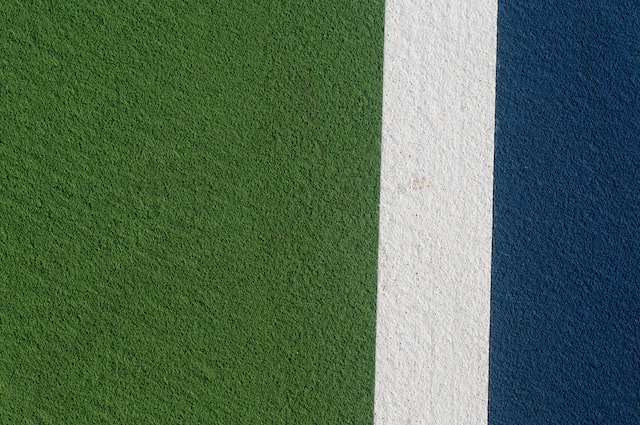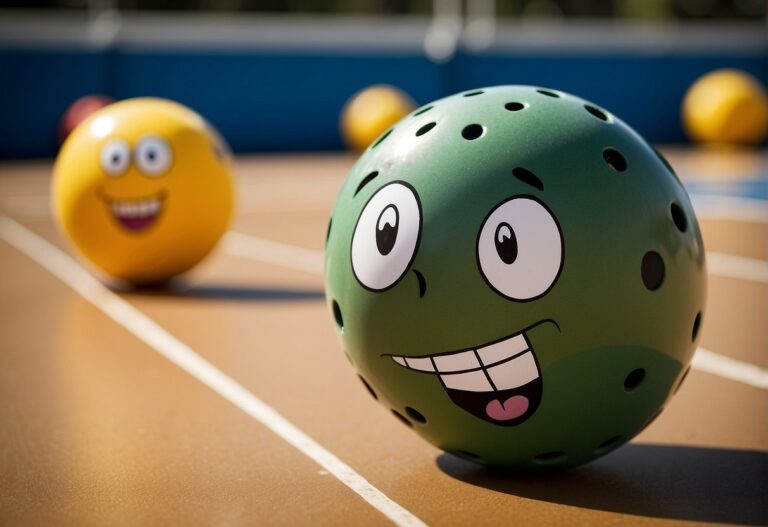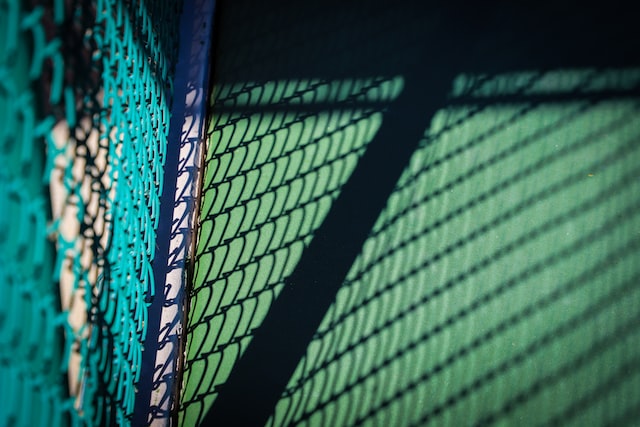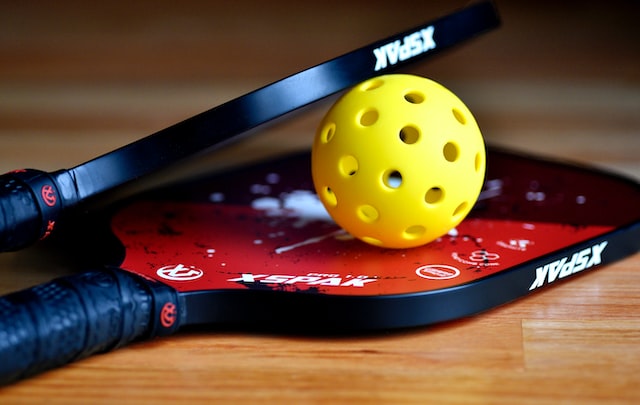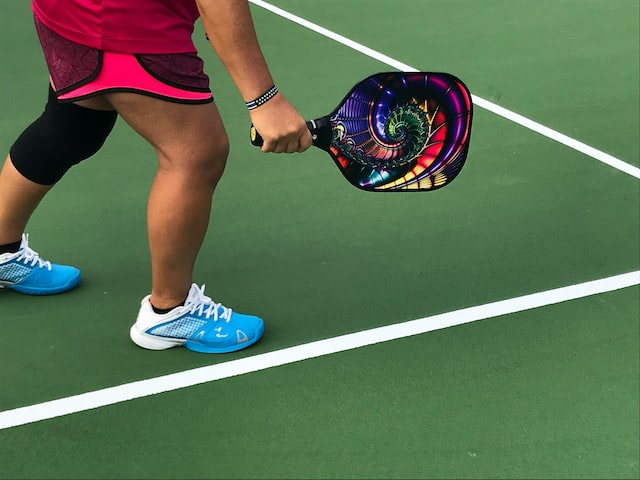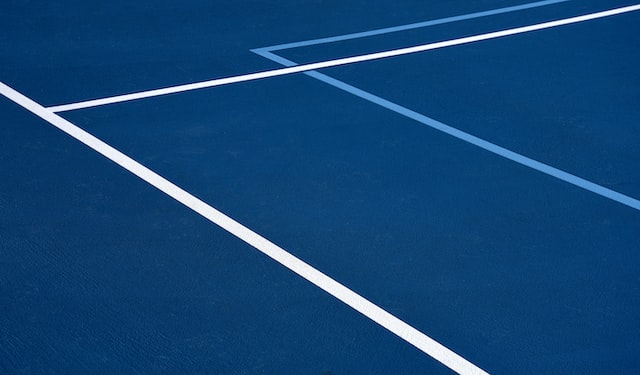Pickleball Techniques: Mastering Your Serve, Forehand, And Backhand
There are some affiliate links below, but they are all products I highly recommend. For more info, view my disclosure here.
Pickleball is an exciting and fast-paced game that’s perfect for all ages and skill levels. This relatively new sport combines elements of tennis, badminton, and ping pong to create a unique experience. If you’re looking to hone your pickleball playing skills, mastering the serve, forehand, and backhand is essential. In this article, we’ll discuss the different techniques you need to master in order to become a pickleball pro.
When it comes to improving your pickleball game, mastering your serve is the first step. It takes practice and dedication to make sure you’re serving with power and accuracy every time. You should also focus on developing your forehand technique so you can return shots quickly and accurately. Finally, don’t forget about improving your backhand technique – it’s one of the most important elements of the game!
With some practice and dedication, you can easily become a master at pickleball techniques such as serving, forehands, and backhands. In this article, we will provide detailed advice on how you can improve each of these aspects of your game in order to take your pickleball skills to the next level!
Overview Of The Sport
Pickleball is an exciting sport that combines elements of tennis, badminton, and table tennis. It’s played on a court similar to a doubles tennis court, but with a lower net. The game is fast-paced and highly competitive. It’s also easy to learn the basics and quickly become an intermediate player.
The main components of pickleball are serves, forehands, and backhands. To master these techniques requires practice and patience. For example, serves can be tricky to execute correctly—the ball must land in the diagonally opposite service box. A successful serve requires both power and accuracy. Forehands can be difficult to control as well; players need to coordinate their swings with the angle of the ball in order to keep it within bounds. Lastly, backhands require good hand-eye coordination and flexibility in order to connect with the ball at just the right moment.
Pickleball is a great sport for all ages and skill levels. With dedication, anyone can become an expert in no time!
Equipment Requirements
Now that you have an understanding of the sport and the rules, it’s time to look at the equipment required to play pickleball. The first item needed is a paddle, which comes in various sizes and weights depending on the player’s preference. The second item needed is a pickleball. It should be noted that not all balls are created equal – some are made from plastic, while others are made from soft rubber. Finally, players will need a net with adjustable poles for playing both singles and doubles matches.
The most important piece of equipment for playing pickleball are appropriate shoes. Shoes should provide adequate grip on the court and support for your feet when running or jumping. Additionally, they should be flexible enough to allow for quick changes in direction during gameplay. It is also important to wear clothes that allow freedom of movement while still providing protection from the sun and insects.
To ensure you have a great pickleball experience, make sure you have all of these items before heading out onto the court! With this gear in hand and some practice, you’ll soon become a master of your serve, forehand, and backhand strokes!
Footwork Basics
Good footwork is essential for a successful pickleball game. It helps you move around the court quickly and efficiently, allowing you to get to the ball and return it in the most effective way. To improve your footwork, start by mastering some basic techniques.
First, practice shuffling your feet quickly from side-to-side so that you can move around the court easily and stay in position to hit the ball. Make sure that your feet are parallel with each other as you do this, and focus on keeping your balance. This will help you stay agile when moving around the court and reacting to shots.
Next, practice hopping forward with one leg while keeping your head up, eyes on the ball, and arms ready to hit it. This will help you cover more ground in less time when returning shots or chasing down balls at the net. Focus on maintaining good form while doing this so that you can keep up with fast-paced rallies without getting tired too quickly.
Finally, practice balancing yourself by standing on one leg while throwing a light object from hand-to-hand or doing another type of balance drill. Good balance is key for recovering quickly and hitting shots accurately after long rallies or chasing down balls at the net. Keep practicing these drills until they become second nature so that you can become an all-around better player on the court.
Grips For Shots
Good grips are essential for executing effective shots in pickleball. There are three main grips used for the forehand and backhand: the continental, eastern, and modified eastern. All three grips have different strengths and should be adapted to your playing style accordingly.
The continental grip is the most common grip used in pickleball. It involves placing your hand on the paddle with your index finger running down the side of the handle, while your thumb faces upwards along the backside of it. This grip allows you to move quickly around the court as it gives you more wrist flexibility.
The eastern grip is similar to the continental, but your thumb will rest on top of the handle instead of behind it. This gives you more control when hitting volleys and enables you to hit shots with more spin if needed. It can also help generate power when serving or returning serves that come at a high velocity.
Lastly, there is a modified eastern grip. This grip combines elements from both of these grips, as you place your hand halfway between them on top of the handle. This way you get a combination of power and control that can help set up successful shots in any situation on court.
No matter which grip you choose, practice using each one regularly so that they become second nature during a match. With some time and dedication you will be able to utilize any shot with ease!
Strategies For Returning A Serve
Now that you have a firm grasp on the proper grip to use when shooting, it is time to learn how to return a serve. Returning a serve is an important aspect of pickleball because it can give you an advantage in the point. To begin, you will want to set up in the ready position with your feet slightly wider than shoulder-width apart and your paddle held by both hands out in front of you.
When returning a serve, there are two main shots that you can use; the forehand and backhand. The forehand is usually used for shots that are straight ahead and the backhand used for shots that are more angled or away from your body. When returning a serve, aim to hit the ball deep into the court so your opponent has less time to react and set up their shot. This can be done by making contact with the ball above your waist level and giving it topspin as you strike it. Additionally, focus on keeping your eyes on the ball until after you make contact with it.
To maximize your success when returning a serve, practice patience and try not to rush into hitting the ball. It may be tempting to quickly swing at anything coming over the net, but waiting a moment allows you extra time to assess where your opponent’s shot is going and plan your response accordingly. Have confidence in yourself and trust that if you take an extra second before swinging at the ball, you will be able to make better decisions and find more success when returning serves.
Power And Spin Serves
Power serves are the bread and butter of a successful pickleball game. They require a player to hit the ball with a lot of force, allowing it to reach deep into their opponent’s court. To execute this serve, you need to have good footwork, body positioning, and a strong wrist. Start by standing at the back line of the court and facing your target. Make sure your stance is wide enough for you to generate power from your legs and hips. Hold the paddle with an open palm grip, making sure your wrist is slightly bent inwards. Take two steps forward while swinging the paddle up in an arc until it is above your head before quickly bringing it down towards the ball as you take another step forward. When you make contact with the ball, thrust your arm forward while pushing off with your legs. This will give you maximum power and spin on your serve.
When executing a spin serve, timing is key along with control over how much spin you want to impart on the ball. Start by standing at the back line of the court in an open stance so that you can easily move into any direction when needed. Grip the paddle using an Eastern forehand grip and hold it close to your body as if you were about to hug someone from behind. Move towards the ball but stop just before contact is made between them both and turn your wrist outward so that it faces towards you instead of away from you. Keep turning until it reaches its maximum point then quickly snap it back towards where you are aiming for impact on the ball; this should impart topspin onto it in order for it to stay low once it hits your opponent’s side of the net. Practice these serves regularly until they become second nature for maximum efficiency during gameplay!
Forehand Groundstrokes
The forehand groundstroke is an important part of any pickleball player’s game. It’s vital to master your forehand in order to stay competitive and be able to return your opponent’s shots. To execute a successful forehand groundstroke, you need to have proper grip, stance, and arm motion.
When gripping the paddle for a forehand shot, make sure that your palm is facing up and the fingers are spread out across the handle. Place your non-dominant hand at the bottom of the handle so that it can provide additional support while hitting. Your dominant hand should be placed near the top of the handle with your index finger extended along its edge.
Your body should also be properly positioned when executing a forehand stroke. Stand with your feet slightly wider than shoulder-width apart for balance and keep your knees bent but not locked. Make sure that you are facing sideways towards where you want the ball to go. As you swing through, keep your arm straight and extend it towards the direction of where you want to hit the ball. Your wrist should be firm and follow through until it reaches its full extension at contact with the ball. With practice and repetition, you will develop muscle memory for proper technique which will result in more power and accuracy in each shot.
Backhand Groundstrokes
Backhand groundstrokes are a great way to control the game and make your opponents move. The first step in mastering the backhand is to understand the proper grip and stance. You should stand with your feet shoulder-width apart and have a slightly closed stance. Hold the paddle with your non-dominant hand at the bottom and your dominant hand near the top of the handle.
The next step is to practice your swing for accuracy and consistency. Make sure to keep your wrist loose and relaxed as you swing, so that you can generate enough power without sacrificing any control. It’s also important to focus on hitting from low to high, as this will give you more spin and increase accuracy. Additionally, be sure to follow through with your swing after each hit, as this will help you maintain good form and increase ball speed.
Finally, practice using your backhand in actual games or drills. This will help you become comfortable using it under pressure situations, which will be essential when playing competitively against other players. As you get more experienced with backhands, remember that varying spin and placement can be an effective way of disrupting your opponent’s rhythm while keeping them on their toes. With practice and dedication, you’ll soon master all aspects of backhand technique!
Volley Shots
Now that you have mastered the backhand groundstroke, it’s time to move on to Volley Shots. Volley shots are a great way to keep your opponent off-balance and can quickly turn the tide of a game.
The first thing to remember when it comes to volleying is that your stroke should be short and compact. Keep your arm close to your body and make sure you hit the ball in front of you while keeping the racket head above the wrist. This will help ensure that you don’t hit too many long shots or pop up balls.
When it comes to footwork, focus on staying light on your feet and moving quickly away from the net after each shot. Make sure you don’t get stuck in one spot as this will limit your ability to react quickly. It’s also important to stay low in order to maintain balance throughout each volley.
With practice and repetition, volleys will become second nature and an integral part of your pickleball arsenal. You’ll find yourself winning more games as volleys become just another tool in your pickleball toolbox!
Strategies For Doubles Play
When playing doubles in pickleball, it’s important to work with your teammate and use strategies to outwit your opponents. The most common strategy is for the serving team to create an angle. This means that a player should aim their shot so that it will land on the opponent’s side diagonally from where they are standing. This will force the opposing team to move around the court more and give you an advantage. Another strategy to consider when playing doubles is communication between teammates. Talking about which shots you plan on taking and where you want to place them can help you outmaneuver your opponents.
It’s also important for each partner on the court to understand their role in the game. The server should be focusing on getting good serves in while their partner should be ready to take control of the net, trying to anticipate opposing shots and keep their opponents guessing. Having one partner at the baseline while another hangs back towards the net can create a strong defensive line against your opponents’ volleys and smashes.
In order for these strategies to work effectively, both teammates need to trust each other and work together as one unit. Working together as a team will give you an edge over any individual opponent or duo because of how hard it is for two people playing against four! With practice and communication, you’ll be able to take control of any doubles match with ease!
